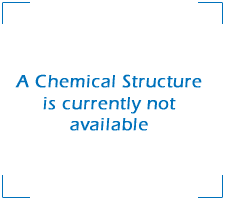Data Collection
Abamectin
CAS Number: 71751-41-2
Basic Information
 Synonym(s): Affirm; Agri-Mek; Avermectin; Avermectin B1; Avid; mixture of Avermectin B1a and Avermectin B1b; Zephyr
Synonym(s): Affirm; Agri-Mek; Avermectin; Avermectin B1; Avid; mixture of Avermectin B1a and Avermectin B1b; Zephyr
Formula: C48H72O14
Molecular Weight: 873.1
Melting Point (°C): 150 - 155
Pronounciation: A-bah-meck-tin
Contaminant Type: Abamectin is an insecticide.
Additional Information: While the LC50 values are quite low, indicating a high level of toxicity to aquatic organisms, actual concentrations of abamectin in surface waters (fresh water) adjacent to treated areas are expected to be low. Application rates of 0.025 pounds of abamectin per acre (the highest recommended rate) should result in concentrations no higher than 26 parts per trillion in adjacent surface waters one day after the application. Rapid photodegradation and adsorption to sediments should produce even lower concentrations within days. The degradation products of abamectin are less toxic to aquatic organisms than abamectin itself. Because abamectin is nearly insoluble in water and has a strong tendency to bind to soil particles, it is therefore immobile in soil and unlikely to leach or contaminate groundwater. Compounds produced by the degradation of abamectin are also immobile and unlikely to contaminate groundwater.
m
Solubility (in water)
- Solubility:
7.8E-09
g/100ml
d
Half-Life (in soil unless otherwise noted)
- t1/2:
1
weeks
a
Environment: Unshaded soil surface
- t1/2:
2-8
weeks
a
Environment: Underneath soil surface
- t1/2:
<1
day
c
Environment: Aerobic soil, in the light
Formulation: Avid 0.15 EC
- t1/2:
~20-47
days
c
Environment: Aerobic soil, in the dark
Formulation: Avid 0.15 EC
- t1/2:
8.0-24.0
hours
m
Environment: Soil surface, subjected to rapid photodegradation
- t1/2:
~1
weeks
m
Environment: Soil surface, not shaded
- t1/2:
2.0-8.0
weeks
m
Environment: Dark, aerobic conditions
- t1/2:
20-47
days
m
Environment: Fine, sandy loam, clay and construction grade sand
Formulation: avermectin B1a
Toxicity Effects
- Organism Type:
Crustaceans
m
Common Name: Blue crab
Scientific Name: Callinectes sapidus
Toxicity: 153 µg/l
Test: 96h LC50
- Organism Type:
Crustaceans
m
Common Name: Daphnia
Scientific Name: Daphnia magna
Toxicity: 0.34 µg/l
Test: 48h LC50
- Organism Type:
Crustaceans
c
Common Name: Daphnia
Scientific Name: Daphnia magna
Toxicity: 0.34 µg/l
Test: Acute LC50
Formulation: Avid 0.15 EC
- Organism Type:
Crustaceans
m
Common Name: Mysid shrimp
Scientific Name: Mysidopsis bahia
Toxicity: 0.022 µg/l
Test: 96h LC50
- Organism Type:
Crustaceans
c
Common Name: Mysid shrimp
Scientific Name: Mysidopsis bahia
Toxicity: 0.022 µg/l
Test: Acute LC50
Formulation: Avid 0.15 EC
- Organism Type:
Crustaceans
m
Common Name: Pink shrimp
Scientific Name: Panaeus duorarum
Toxicity: 1.6 µg/l
Test: 96h LC50
- Organism Type:
Fish
m
Common Name: Sheepshead minnow
Scientific Name: Cyprinodon variegatus
Toxicity: 15 µg/l
Test: 96h LC50
- Organism Type:
Fish
m
Common Name: Carp
Scientific Name: Cyprinus carpio
Toxicity: 42 µg/l
Test: 96h LC50
- Organism Type:
Fish
m
Common Name: Channel catfish
Scientific Name: Ictalurus punctatus
Toxicity: 24 µg/l
Test: 96h LC50
- Organism Type:
Fish
m
Common Name: Bluegill
Scientific Name: Lepomis macrochirus
Toxicity: 9.6 µg/l
Test: 96h LC50
- Organism Type:
Fish
c
Common Name: Bluegill
Scientific Name: Lepomis macrochirus
Toxicity: 9.6 µg/l
Test: Acute LC50
Formulation: Avid 0.15 EC
- Organism Type:
Fish
m
Common Name: Rainbow trout
Scientific Name: Oncorhynchus mykiss
Toxicity: 3.2 µg/l
Test: 96h LC50
- Organism Type:
Fish
c
Common Name: Rainbow trout
Scientific Name: Oncorhynchus mykiss
Toxicity: 3.6 µg/l
Test: Acute LC50
Formulation: Avid 0.15 EC
- Organism Type:
Mammals
g
Common Name: Rat
Scientific Name: Muridae (Family)
Toxicity: 300 mg/kg
Test: LD50
- Organism Type:
Mammals
m
Common Name: Rat
Scientific Name: Muridae (Family)
Toxicity: 300 mg/kg
Test: LD50
Formulation: 1.8% w/v
- Organism Type:
Mammals
m
Common Name: Rat
Scientific Name: Muridae (Family)
Toxicity: 11 mg/kg
Test: LD50
- Organism Type:
Molluscs
m
Common Name: Eastern oyster
Scientific Name: Crassostrea virginica
Toxicity: 430 µg/l
Test: 96h LC50
Work Cited
|
a
|
Beyond pesticides fact sheets. Pages retrieved November, 2003 from http://www.beyondpesticides.org. Beyond Pesticides, Washington, DC.
|
|
c
|
C&P Press. 2002. EPR Professional Annual CD. Crop Protection Reference. Chemical and Pharmacuetical Press, Inc., New York, NY.
|
|
d
|
ChemFinder. Cambridge MA: CambridgeSoft Corporation. Retrieved November, 2003 from http://chemfinder.cambridgesoft.com
|
|
g
|
Meister, R. T., and C. Sine (Ed). 2003. Crop Protection Handbook, volume 89. Meister Publishing Company, Willoughby, OH.
|
|
l
|
The ARS Pesticide Properties Database. Pages retrieved November, 2003 from http://www.arsusda.gov/acsl/ppdb.html. USDA, ARS, Alternate Crops & Systems Lab, Beltsville, MD.
|
|
m
|
The University of Manchester Compound Database. Pages retrieved November 2003 from http://www.man.ac.uk/umec/extra/list.html. The University of Manchester, Manchester, England.
|